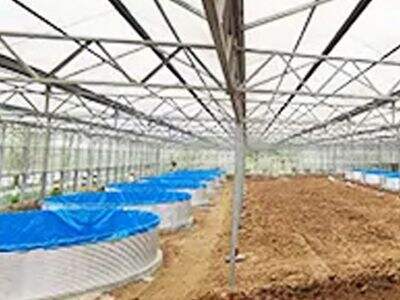Have you ever wondered how fish and other sea living things arrive at our plate? One means of doing this really is through aquaculture! Aquaculture is a unique form of fishery in which fish and crustaceans such as shrimp, and oysters are reared in enclosed working systems. In other words, these animals are cared for by humans in a place that is able to be monitored and controlled. If you're new to aquaculture it can be a little tricky to choose the right method. But don’t worry! Fish farming may seem challenging, but this beginner's guide is here to help you decide on the best method.
Choosing the Suitable Aquaculture System for You
When selecting an aquaculture method, there is a lot of thought that must go into what you are looking for in particular. Try asking yourself a series of questions to help narrow it down. For instance, do you have a large or a small area? It really should guide what type of method you can implement. And are you accustomed to working with complicated tools or equipment? If you’re not too experienced, you might want to go for a simpler way. Finally, consider how much time or money you have to invest in this project. Answering these questions can help find an approach that suits you and your situation. Here are some common aquaculture methods that are beginner-friendly.
10 types of aquaculture methods you should know about
Pond Aquaculture – A method where fish are grown in a pond or lake, outdoors. It tends to be inexpensive and easy to care for, making it a popular choice for beginners. If you have a stream or pond, you can use that, or just dig a pond. The downside of this method is that it may be difficult to keep the water clean and healthy. Open waters such as ponds can develop algae or other issues. It does require attention in order to keep the fish healthy.
Tank Aquaculture — When using this method, fish are raised in tanks or long pools inside buildings. For even better control over the water quality and temperature. This allows you to maintain clean, temperate water so that the fish can grow. The downside of this option is it has a higher setup and maintenance cost since you will need to invest in tanks and equipment. If you have some experience and resources to invest, it can be a good fit.
Recirculating Aquaculture Systems (RAS): RAS allows water to be reused in a closed system meaning the water is recirculated. This prevents waste and saves waters, which is an excellent step to save the environment. This, however, can be a more complex and potentially energy intensive approach to make everything run smoothly. RAS could be a good approach for you if you care about sustainable practices and know how to treat it.
Aquaponics: This combines aquaculture and hydroponics — growing plants without soil. In aquaponics, fish waste produces is beneficial for growing plants, and the plants clean the water for the fish in return. It’s a wonderful and environmentally sustainable approach to farming, in that both fish and plants can be cultivated at the same time. It also needs more expertise and work to get running and keep it so make sure you want that challenge!
Which Method is Best for You?
Having considered these different methods of aquaculture, which type do you feel would best suit your requirements? If you are just starting out in aquaculture or do not have a big budget, pond aquaculture is likely your best option. This is easy to start and does not involve a huge cost. If you have some experience and an indoor space where you can operate, tank aquaculture could be a suitable option. It provides greater control over the environment the fish are in. For those who are keen on taking the green path while also willing to know about it, RAS or aquaponics, perhaps.
Considerations in Picking a Method
A few more considerations when you make your final choice. Plan a layout: Decide what fish or aquatic animals to raise. Different sick fish respond to different types of fish remedy. So for example, fish species that might struggle in a tank, species that can deal with a pond. Second, inspect the local rules and the necessary permits. Certain forms of aquaculture may be prohibited by certain areas, so it is important to know what is permissible in your locality. Finally, consider whether people will want to buy the fish or shellfish that you are raising. Understanding whether you have market demand for your product will allow you to make a better call.
In Conclusion
Discussing the different types of aquaculture methods can be a bit daunting, however that is not the intent! By taking time to consider what you actually require in a method, evaluate the various approaches available to you, and consider back to the key points we talked about, it is possible to discover a technique that helps for you. We hope that this beginner’s guide enables you to understand more about aquaculture and kick starts your exciting journey toward making you a successful fish farmer! Whether your goals are sustainable fish ranching or simply enjoying the experience of raising fish through careful method and time spent we can help this become a rewarding experience while making a good contribution to our food supply!












































